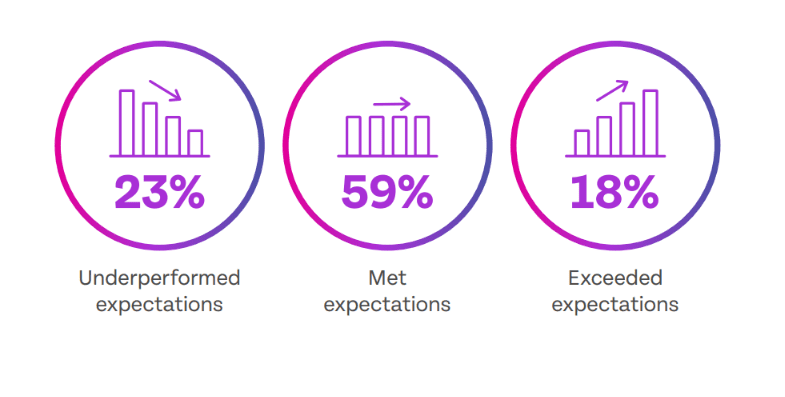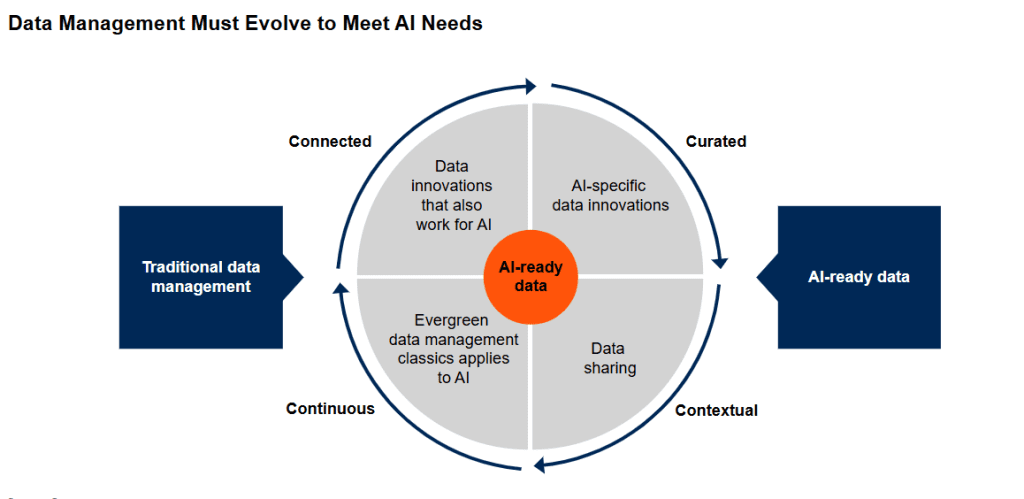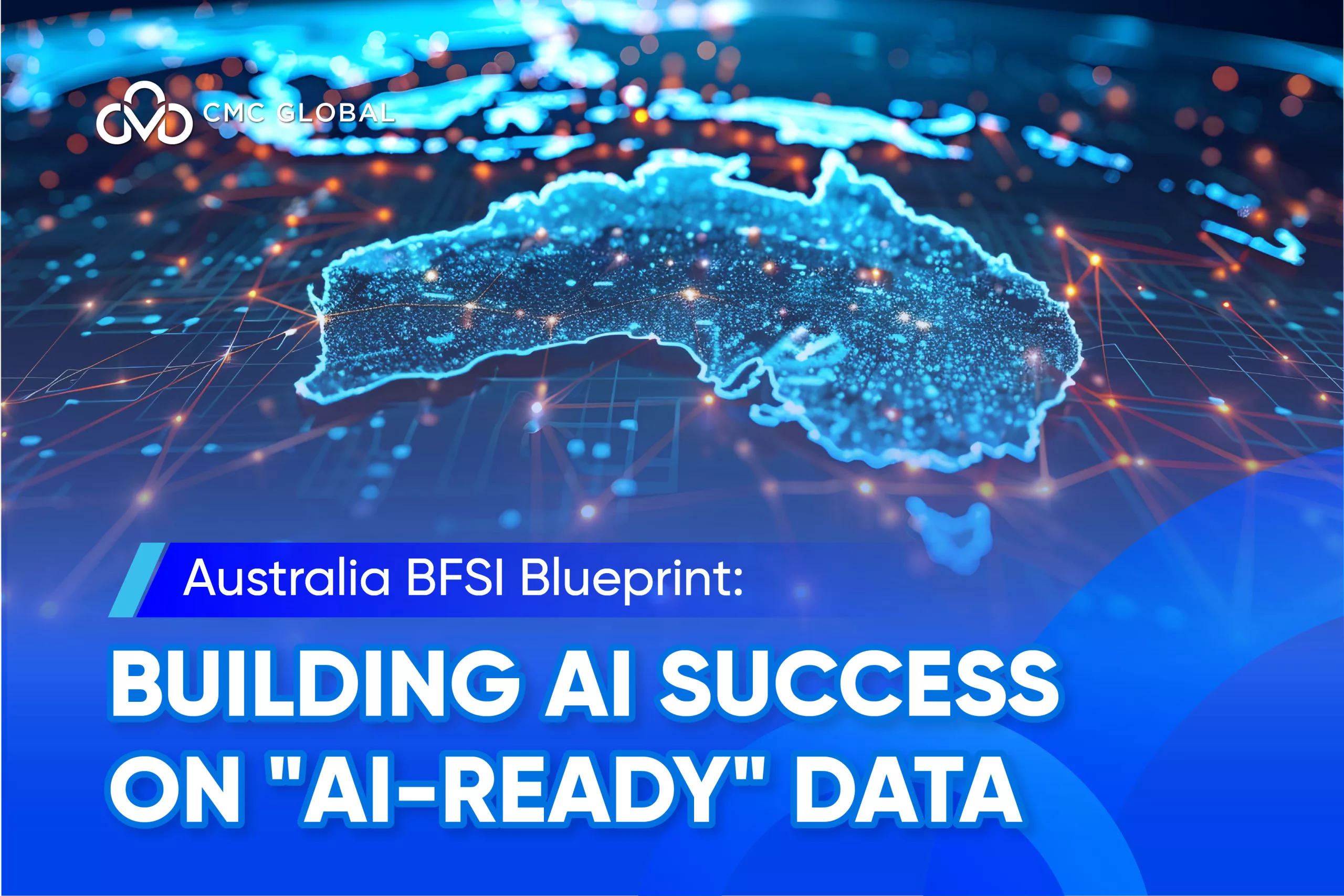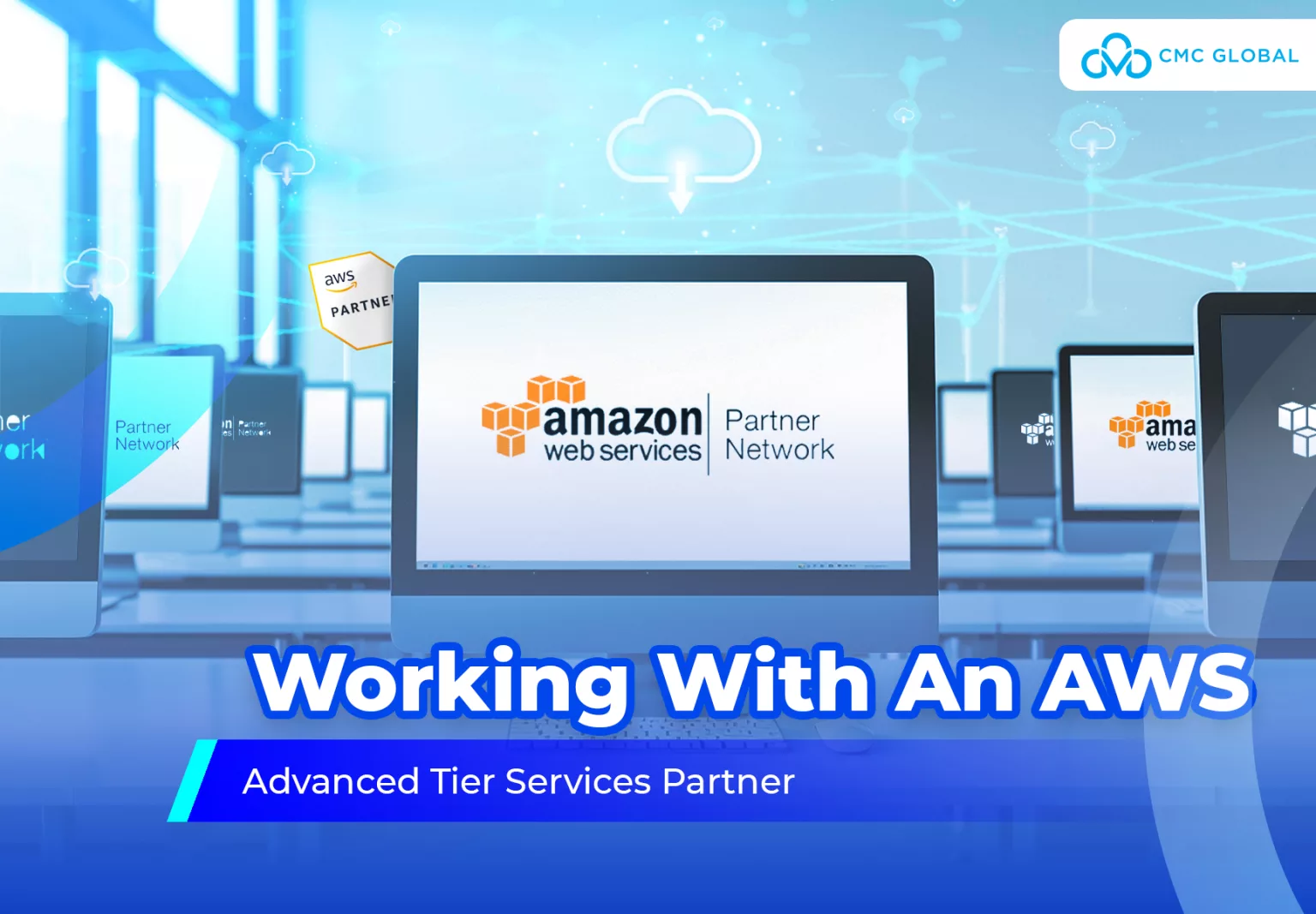As Australia’s BFSI sector embrace digital transformation, AI-ready data has become a cornerstone for unlocking potential. This blueprint outlines how financial institutions can leverage robust data foundations to drive AI success, enhance decision-making, and stay competitive in a dynamic market.
While AI Enthusiasm is High, Enterprises Must Overcome Gaps to Realize the Full Benefits of AI
Businesses globally are poised for transformation with the adoption of AI. In 2024, organizations increasingly recognize the vast potential of this technology.
Yet, the real challenge lies in progressing beyond initial implementation to achieve effective, scalable AI. This includes IT departments striving to enhance digital experiences for both employees and customers while optimizing IT operations.
Decision-makers are Concerned that Data Challenges are Limiting AI Success
According to the Riverbed Global AI & Digital Experience Survey, around 23% of AI projects are falling short of meeting company goals, often due to data-related issues. This survey gathered insights from 1,200 decision-makers in IT, business, and the public sector across multiple countries, including Australia, France, Germany, Saudi Arabia, Spain, the UK, and the U.S., each with annual revenues exceeding $250 million.

Although a significant majority of leaders (85%) agree that quality data is essential for effective AI, 42% point out that the absence of high-quality internal data limits their willingness to further invest in AI.
Additionally, 76% of decision-makers across IT, business, and public sectors express concerns about relying on synthetic data instead of real data for AI initiatives.
These facts highlight the need for investment in AI-ready data to fully utilize the potential of AI.
From Data to Deployment: Steps for AI-Ready Data
To establish AI-ready data within Australia’s BFSI sector, a structured approach can make all the difference. By following these four essential steps, organizations can effectively lay the groundwork for impactful AI initiatives, ensuring data is primed to meet specific AI requirements.
- Step 1: Get Grounded and Gain Foresight
- Step 2: Define Value and Gain Executive Buy-In
- Step 3: Execute, Implement and Scale
- Step 4: Govern and Manage Change

Step 1: Get Grounded and Gain Foresight
Begin by clarifying what “AI-ready data” means for your unique AI applications. Keep in mind, different AI use cases require different types of data and varying levels of data management support, as well as tailored SLAs.
To assess data readiness for AI, align the data with your use case by evaluating its quality, verifying its governance, and ensuring it is adequately managed. Identifying usable data is an iterative process, focusing on refining and adapting it to meet evolving needs.
Evaluate AI-ready data by adapting traditional data management practices to support specific AI techniques and use cases.
Make sure the data fulfills AI-ready criteria, such as representativeness, adherence to data governance principles, and flexibility to adapt quickly to new demands.
Establish continuous governance requirements to support your AI initiative, including dedicated data stewardship and compliance with data and AI standards and regulations.
Step 2: Define Value and Gain Executive Buy-In

- Clarify for the board the difference between traditional AI and GenAI, emphasizing the potential expectations and impact these new techniques may have on data management and AI-ready data investment.
- If AI isn’t new to the organization, update the board and executives on current AI initiatives, data investments, and the resulting business impacts.
- Suggest an evolutionary improvement in data management to support AI, rather than a full overhaul. Point out essential technologies, skills, and architectures, focusing on key investments tied to specific use cases, outcomes, and success metrics.
- Define financial and nonfinancial benefits for stakeholders, linking technical outcomes from AI-ready data to business value.
- Prioritize AI-ready data investments based on alignment with use-case goals, potential value, and the balance between cost and risks.
- Apply metrics like “time to integrated data delivery,” “DataOps cycle reduction,” and “data quality improvement,” aligning each metric with AI use case objectives.
Step 3: Execute, Implement and Scale
- Evolve data engineering practices to include techniques like RAG, prompt engineering, and synthetic data, supporting advanced AI use cases.
- Build on existing logical data warehouse architecture to support AI; a logical foundation is essential to effectively integrate RAG-based models with structured data.
- Extend the logical data warehouse with a data fabric design. Prioritize investments in active metadata, knowledge graphs, DataOps, and FinOps to enhance orchestration and semantic context.
- A resilient data fabric ensures transparency in AI, providing lineage, context, and bias reduction by integrating organizational data.
- Based on AI goals, expand the data fabric to incorporate vendor databases, RAG orchestration, observability tools, and semantic modeling for multistructured data.
- Use GenAI in data management tech to streamline data development, maintenance, and operations, particularly for unstructured data integration.
Step 4: Govern and Manage Change

- Strengthen metadata practices with rich semantics to enhance GenAI accuracy on enterprise data.
- Develop an adaptive governance model—use centralized governance for critical AI models and apply federated governance across business domains as needed.
- Build skills in data literacy and GenAI to effectively and safely navigate emerging technologies.
- Test GenAI data management solutions rigorously, ensuring they meet accuracy, quality, security, and privacy standards before deployment.
- Assess the short- and mid-term value of GenAI in data management, considering technology and staffing costs along with potential process improvements.
Achieve Data Readiness with CMC Global
AI’s potential to transform the banking sector and create new opportunities is immense, but it hinges on one critical factor: the readiness of the data we feed into these intelligent systems.
Learn more about how CMC Global can help your organization prepare for AI by taking honest assessment of their current data readiness, providing expert data analytics solutions, ensuring high-quality, secure, and AI-ready data.
Contact us for a free consultation to discuss your IT requirements.




